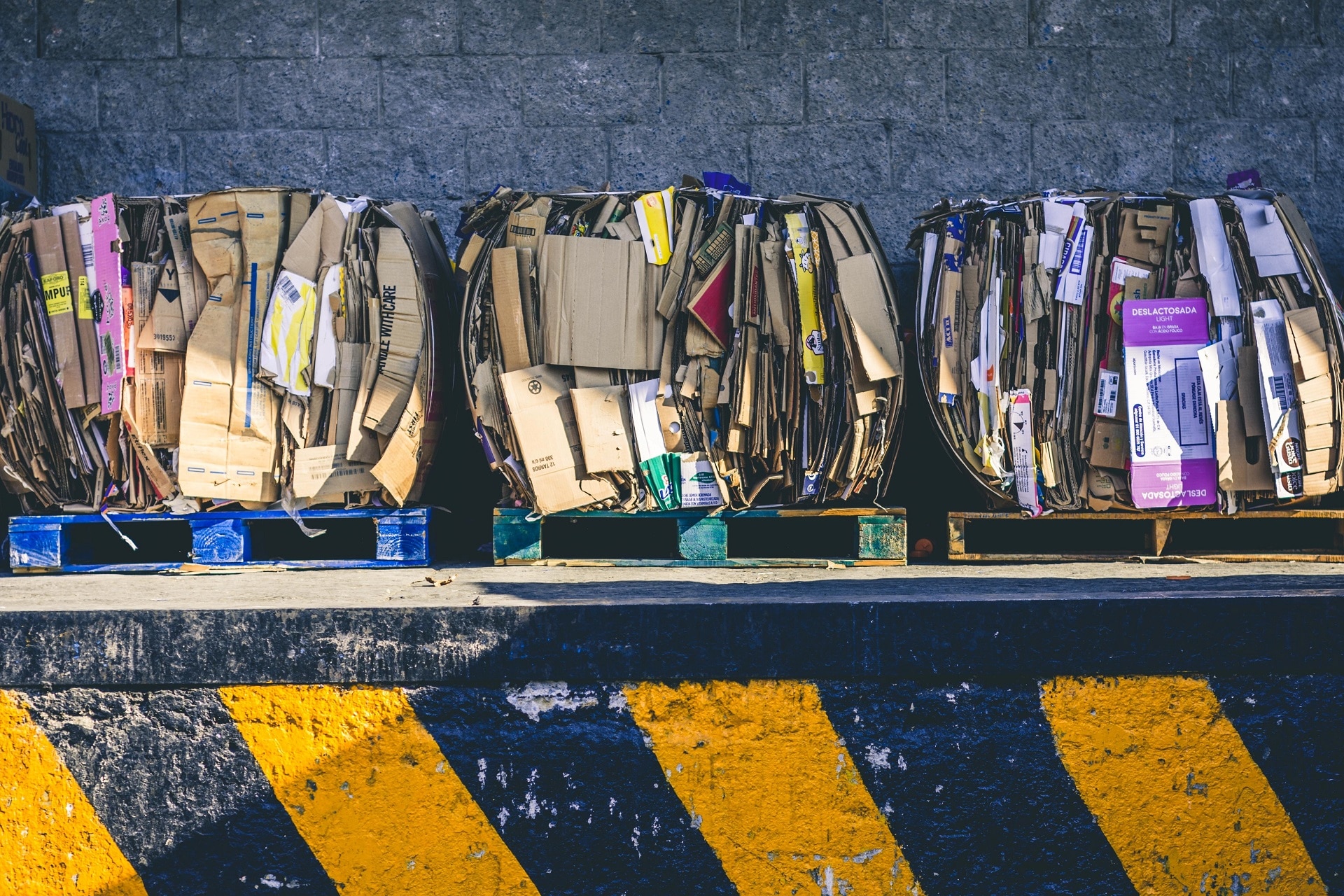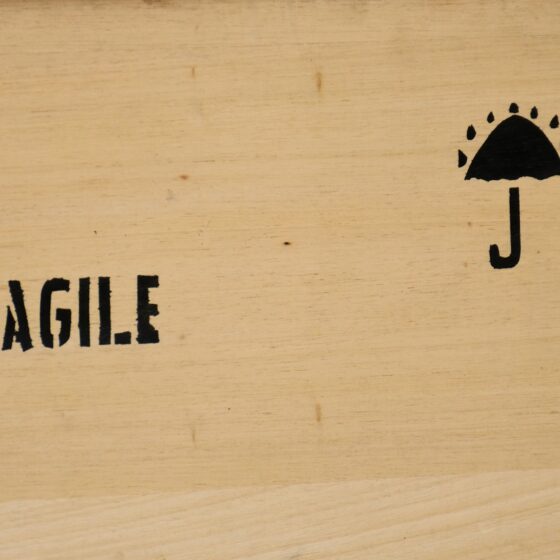Every year, people all over the world are producing a shocking amount of trash. Even though most of it can be recycled or composted, the majority is still dumped in landfills. Only about 13% is recycled on the global level.
Hopefully, these recycling statistics will help people realize how important it is to recycle. Most of the materials take hundreds of years to decompose, and plastic needs up to 1,000 years. Besides preventing pollution, recycling delivers a number of other benefits. It preserves natural resources, saves energy, and protects the environment and human health.
The Top 10 Recycling Statistics for 2024
- On average, every American produces 1,609 pounds of garbage every year.
- In 2018, 69.1 million tons of municipal solid waste were recycled in the US.
- Americans throw away 20 billion disposable diapers every year.
- Sweden dumps only 1% of trash in landfills.
- On the global level, we produce 2.12 billion tons of waste every year.
- China produces the largest amount of plastic packaging waste in the world.
- About 68% of paper and paperboard was recycled in 2018.
- 91% of plastic waste hasn’t been recycled.
- Approximately 3 million tons of glass containers were recycled in the US in 2017.
- The recycling industry creates more jobs than the solid waste management industry.
United States Recycling Statistics
Here, we’ll be discussing recycling in the US. Below you can see a chart showing the amount of recycled MSW by material.
1. On average, every American produces 1,609 pounds of garbage every year.
(USI)
This makes the US the greatest producer of trash in the world, according to US recycling rates. Considering that Americans make up 5% of the world’s population, it’s devastating to find out that they produce 40% of the world’s total waste. This consists of plastics, papers, food waste, and more.
2. In 2018, 69.1 million tons of municipal solid waste were recycled in the US.
(EPA)
In addition, the recycling stats show that this is an increase of 2.2% since 2015 when there was 67.6 million tons recycled.
And which material was mostly recycled?
3. 66.54% of recycled waste was paper and paperboard in 2018.
(EPA)
Metals accounted for approximately 12.62%, and only 4–5% of recycled waste was plastic, glass, and wood. Even though there’s a lot of room for improvement, the good news is that there’s a rising trend in recycling rates. Based on the US recycling statistics, in 1960, only about 6% of MSW was recycled, while in 2018, the recycling rate was 32.1%. So American recycling efforts are showing some promising results.
4. 32.1 million tons of corrugated boxes were recycled in 2018.
(EPA)
When it comes to different types of materials, corrugated boxes were the most-recycled items. They’re followed by paper products that are mixed and nondurable: 8.8 million tons were recycled. Of course, certain materials like yard trimmings are best when composted.
If you have a garden, you can also contribute to this type of recycling effort. It’s interesting that people who use their gardens are about 25% more likely to care about environmental efforts.
5. About 3.1 million tons of wood pallets were recycled in 2018.
(EPA)
Statistics about recycling indicate that the generation of wood waste amounted to 18.1 million tons in 2018.
6. Americans throw away 20 billion disposable diapers every year.
(OurEverydayLife)
In addition to creating 3.5 million tons of waste, disposable diapers need up to 500 years to degrade. They also use a sea of natural resources to make. Every year, about 200,000 trees and 3.4 billion gallons of fuel oil are used to produce diapers in the US.
World Recycling Statistics
In this section, we’ll be looking at recycling throughout the world.
7. 68% of municipal waste was recycled and composted in Germany in 2017.
(EEA, Report on Global Recycling Rates)
Germany is the leading country in Europe when it comes to recycling municipal waste. It’s followed by Austria (58%), Slovenia (58%), and Belgium (54%). In fact, Germany is also the leader on a global scale. According to global waste statistics, the top five countries, besides Germany, include Austria, South Korea, Wales, and Switzerland.
8. Sweden dumps only 1% of trash in landfills.
(Blue Ocean)
Sweden has realized the importance of recycling and responsible waste management. According to recycling rates by country, it recycles 47% of its trash and converts 52% into energy. This way, it generates enough energy to heat one million homes, and it provides electricity for 250,000 homes.
To get everyone involved, Sweden gives discount vouchers to citizens who use recycling machines. Also, there’s a recycling center within 1,000 feet of every residential area. Plus, they provide kids with facts about recycling from an early age.
9. On the global level, we produce 2.12 billion tons of waste every year.
(Global Recycling Day)
According to the World Bank, it’s estimated that this amount of trash will triple by 2100. Therefore, recycling might be the only solution to protecting the environment and preserving natural resources.
10. China produces the largest amount of plastic packaging waste in the world.
(UNEP)
However, the US is the greatest producer of plastic packaging waste per capita. It’s followed by Japan and the European Union, as the stats about recycling show.
11. The worldwide population uses 1 to 5 trillion plastic bags every year.
(UNEP)
Facts about recycling plastic bags show that if 5 trillion plastic bags are used every year, it means that almost 10 million bags are consumed every minute, or 160,000 every second! Another interesting but sad fact is that 5 trillion plastic bags could cover an area twice the size of France.
Metal Recycling Facts
Here, we’ll be focusing on the recycling of metal, how it works, and what the numbers are.
12. About 2.2 million tons of steel packaging waste was generated in the US in 2018.
(EPA)
Steel packaging includes steel cans, steel barrels, strapping, and other types of steel containers. The generated amount of this type of waste amounts to 0.8% of the total MSW.
13. Over 73% of generated steel containers and packaging were recycled.
(EPA)
In other words, metal recycling rates show that about 1.6 million tons of steel packaging were recycled in 2018. In addition to recycling metal, the US combusted approximately 5% of this type of waste for energy recovery.
14. About 1.9 million tons of aluminum packaging waste was generated in 2018.
(EPA)
Beer and beverage cans, foil, and closures, such as caps, are some examples of aluminum packaging. According to estimates, aluminum represents 1.3 percent of the total generation of municipal solid waste.
15. 34.9% of aluminum containers and packaging were recycled in 2018.
(EPA)
According to aluminum recycling rates, about 670,000 tons of aluminum cans were recycled in 2018. In addition, approximately 13.8% of aluminum packaging waste was combusted with energy recovery.
16. Recycling rates show that recycling a can takes 95% less water and energy than making a can from raw materials.
(Recycle Across America)
This is one intriguing way that recycling can help reduce water consumption. Interestingly, you can save enough energy to power a TV for an entire day by recycling only one aluminum can.
Paper Recycling Facts
In this section, we’ll be looking at paper recycling in particular.
17. 45.97 million tons of paper and paperboard were recycled in 2018.
(EPA)
In 2018, the generation of paper and paperboard waste amounted to 67.4 million tons. So the recycling rate for paper waste was about 68%.
18. Recycling a 3-foot-high stack of newspaper can spare a tree.
(Recycle Across America, University of Southern Indiana)
According to the University of Southern Indiana, we can save 17 trees by recycling a ton of paper. In addition, this saves 4,000 kilowatts of energy, 380 gallons of oil, and 7,000 gallons of water.
Facts About Recycling Plastic
Here’s everything you need to know about recycling plastic in 2022.
19. 91% of plastic waste hasn’t been recycled.
(National Geographic)
So far, 8.3 billion metric tons of plastic have been created, and most of it (6.3 billion metric tons) has ended up in the trash. And as if this isn’t shocking enough, only 9% of this amount has been recycled.
20. The generation of plastic products was estimated at 35.7 million tons in 2018.
(EPA)
We should all know some basic recycling facts. Plastic packaging includes PET bottles, HDPE (high-density polyethylene) milk jugs, bags, and other products made of LDPE (low-density polyethylene), as well as other plastic packaging made of PVC (polyvinyl chloride), PP (polypropylene), and other plastic resins.
21. Only 12.2% of plastic product generation was recycled in the US in 2018.
(EPA)
About 910,000 tons of PET bottles and jars, and 220,000 tons of HDPE bottles were recycled in 2018. In total, the recycling facts and statistics show that approximately 2 million tons of this type of waste were recycled in 2018.
22. When thrown into a landfill, plastic needs about 1,000 years to degrade.
(RCU)
Therefore, it’s always better to use containers made of glass or aluminum, completely recyclable materials. In addition, we can drastically reduce the need for disposable plastic bottles by using reusable glasses and bottles. Based on the plastic recycling statistics, this way, on average, each of us wouldn’t have a need for about 100 plastic bottles a year.
23. People around the world buy about 20,000 plastic bottles every second.
(The Guardian)
There’s a constant increase in the demand for plastic bottles. In 2016, people around the world bought over 480 billion plastic bottles. It was expected that this number would rise to over 580 billion by 2021.
Unfortunately, when it comes to plastic bottle recycling, the facts show us that our efforts can’t keep up.
24. By 2050, the ocean will have more plastic in it than fish (by weight).
(The Guardian)
In 2016, less than 50% of the bottles sold were recycled. Instead of being recycled, plastic bottles mostly end up in landfills, or even worse, in the ocean. Every year, 5 to 13 million tons of plastic go into the ocean. As birds, fish, and other animals ingest it, plastic also ends up on our plates. This is another reason we need to spread the water bottle recycling facts and start acting!
25. About 100 billion plastic bags were used in the US every day in 2014.
(Earth Policy Institute)
To reduce the use of plastic bags, many cities and countries have banned or imposed a fee for their use. Denmark was the first country to pass a plastic bag tax back in 1993.
Glass Recycling Facts
Here are some fascinating facts and statistics surrounding the recycling of glass.
26. Approximately 3.1 million tons of glass containers were recycled in the US in 2018.
(EPA)
Since about 9.8 million tons of glass containers were generated, about 31.2% of the generated amount was recycled. In addition, approximately 1.3 million tons were combusted with energy recovery, based on the US recycling stats.
27. Glass can be recycled over and over again without losing its quality.
(GPI)
Food and beverage packaging made of glass is 100% recyclable. However, it shouldn’t be mixed with other kinds of glass, such as crystal, windows, etc., because these are produced through different processes.
Other Recycling Statistics
In this section, we’ll be looking at some miscellaneous stats on recycling.
28. The recycling industry creates more jobs than the solid waste management industry.
(Small Business)
In the US, 1.25 million people work in the recycling industry, while only about 250,000 work in the American waste management industry. In addition, on average, employees in the recycling industry earn more.
29. Recycling waste is costlier than disposing of it in landfills.
(UMD)
When it comes to recycling costs, statistics indicate that the cost of recycling is $147 per ton while landfilling costs $28 per ton. However, recycling is not all about money—it’s about protecting our environment and human health. On the other hand, recycling programs can also damage the environment. So it’s always best to try to reduce the generation of waste and promote reusable containers and packaging. Plus, you can also think of creative ways to reuse your old furniture.
Wrapping Up
Considering the devastating effect of waste on our environment, and consequently our health, it’s crucial to act while we still have a chance. Therefore, we should try to be as eco-friendly as possible. For a start, we can use renewable energy resources, such as solar energy, and recycle. All the recycling statistics up to 2022 clearly indicate that we have to take care of our planet by keeping it clean. Don’t think that your efforts don’t count—each of us can make a difference!
In 2018, there was a total recycling and composting rate of 32.1%. The total municipal solid waste measured at 292.4 million tons. Around 69 million tons of this waste were recycled and 25 million tons of this waste were composted in that year. In the United States, only around 28% of what could be recycled is actually recycled. On the whole, around 80% of waste could be recycled, yet only a small portion of this is actually recycled. Therefore, there’s much room for improvement in this area. San Francisco has the highest rate of recycling and composting in the United States. They recycle and compost around 80%. San Francisco aims to go waste-free in the near future. With San Francisco and Los Angeles on the list of cities that recycle the most, it would appear that the state with the most recycling is California. Germany is the country with the best record when it comes to recycling. 56.1% of the total waste produced by the country is recycled each year, which is the highest recycling rate of any country in the world. According to the statistics from 2018, the generation of major appliances (or white goods) was 5.3 million tons in the US. About 58% of that amount, or about 3.1 million tons, was recycled in order to recover ferrous metals (iron and steel). When it comes to small appliances, such as hairdryers and toasters, only about 5.6% was recycled. By recycling, we can prevent pollution and protect the environment. In addition, the facts about waste and recycling show that it helps us preserve natural resources, such as water, timber, and minerals, and save energy. Recycling can also have a positive effect on national economies since it provides a domestic source of materials and creates jobs. Since recycled materials can replace raw materials, there’s less need for mining, cutting down trees, and other extraction processes. Also, recycling reduces the needed amount of raw materials to be processed, which recycling statistics confirm. Therefore, it reduces air and water pollution. In addition, it positively affects climate change by saving energy and thus reducing greenhouse gas emissions.FAQ
What percentage of waste is recycled in the world?
What percent of recyclables are thrown away?
Which states recycle the most?
What country recycles the most?
What are the statistics on recycling appliances?
What are the benefits of recycling?
How does recycling help the environment?
Sources:
- Blue Ocean
- Earth Policy Institute
- EPA
- EPA
- EPA
- EPA
- EPA
- EPA
- European Environmental Agency
- Glass Packaging institute
- Global Recycling Day
- Green America
- National Geographic
- NS Packaging
- OurEverydayLife
- Recycle Across America
- Recycling Coalition of Utah
- Report on Global Recycling Rates
- St. Charles County
- The Government of Jersey
- The Guardian
- United Nations Environment Programme
- University of Southern Indiana
- University of Southern Indiana













